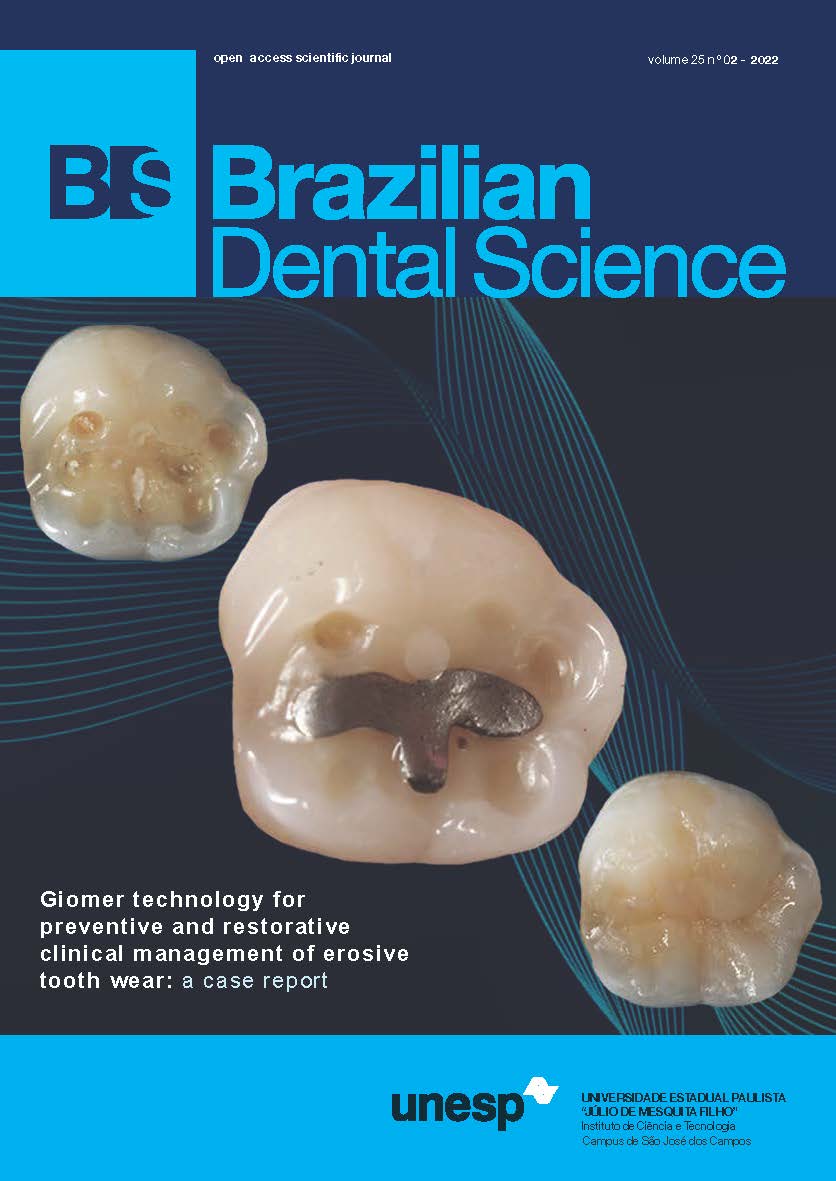The Erbium laser in the debonding of ceramics: a literature review
DOI:
https://doi.org/10.4322/bds.2022.e3154Abstract
Background: The debonding of crowns and ceramic veneers with laser is already a reality in the clinic. It presents
benefits in comparison to traditional removal with the use of a rotating instrument; however, there is still no
consolidated protocol and many professionals use it without the necessary scientific basis. Objective: The aim of
this work was to perform a literature review on the debonding of indirect ceramic restorations using the Er:YAG
and Er,Cr:YSGG lasers to provide clinical professionals and the scientific community a careful analysis, and also
to guiding the use of irradiation at laser for such procedures. Methods: Bibliographic searches were performed in
the following databases: Pubmed, Web of Science and Google Scholar. According to the inclusion criteria adopted,
twenty-seven clinical and in vitro studies were selected in the period from 2007 to 2021. In the present work, the
composition of the crowns and facets, as well as the types of cement and the laser irradiation protocols adopted
in the selected studies is detailed. Conclusions: It was concluded that the use of erbium lasers for debonding
of indirect ceramic restorations proved to be more selective and conservative when compared to removal with
a rotary diamond instrument. Furthermore, it was shown to be in more efficient in debonding different types
of ceramics. However, there are great variations in the “debonding” protocols, which emphasizes the need for
further studies that seek to standardize the irradiation protocols considering the different clinical situations.
KEYWORDS
Veneers debonding; Debonding; Er,Cr:YSGG laser; Er:YAG laser; Ceramics.
Downloads
Downloads
Published
How to Cite
Issue
Section
License
Brazilian Dental Science uses the Creative Commons (CC-BY 4.0) license, thus preserving the integrity of articles in an open access environment. The journal allows the author to retain publishing rights without restrictions.
=================




























